What Is the Difference Between Himalayan and Californian Rabbits?
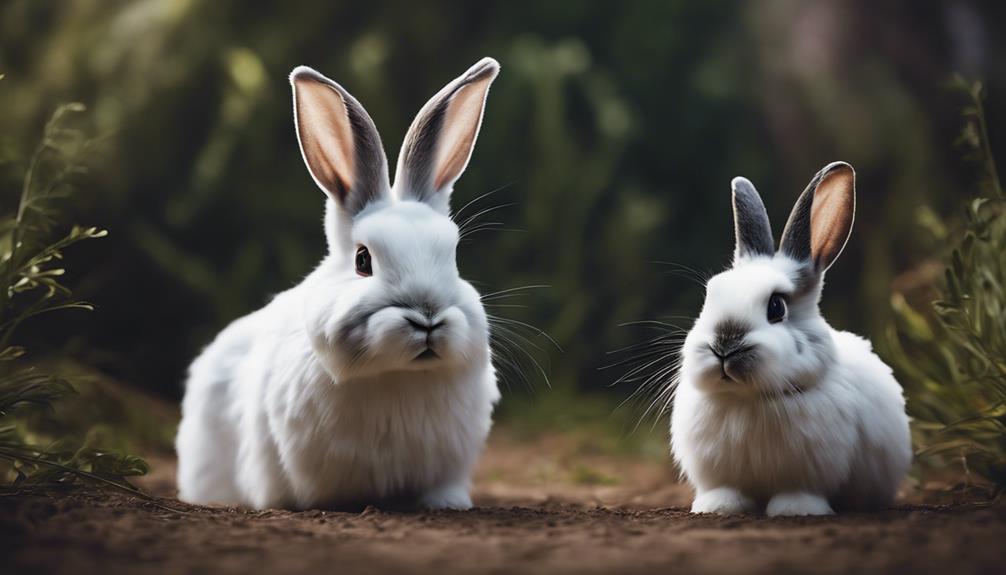
Himalayan rabbits are known for their distinctive coloration, with a white body and dark ears, nose, feet, and tail. Californian rabbits, on the other hand, have a white body with dark-colored points on their ears, nose, feet, and tail, similar to Siamese cats. In terms of behavior, Himalayan rabbits are generally calm and gentle, making them great pets for families. Californian rabbits, on the other hand, are known for their playful and energetic nature, requiring plenty of space to run and play.
Overall, while both breeds have their own unique characteristics, potential rabbit owners should consider their living situation and desired level of interaction when choosing between a Himalayan and Californian rabbit.
Origins and History
The origins and history of Himalayan and Californian rabbits shed light on their unique development and distinct characteristics within the rabbit breeding world. Himalayan rabbits trace their roots back to Asia and the Middle East, first documented in Europe in 1857. They made their way to the United States during the Belgian hare boom in 1898 and were later raised for show in Great Britain towards the end of the 19th century.
On the other hand, Californian rabbits were specifically bred in California during the 1920s by crossing Himalayan, New Zealand, and Chinchilla breeds.
Understanding the historical background of these rabbit breeds is crucial in appreciating their individual traits. Himalayan rabbits are renowned for their striking color patterns and slender, elongated bodies. In contrast, Californian rabbits exhibit a more robust and heavier build. By delving into the origins and history of these breeds, one can better grasp the foundation upon which their distinct characteristics and qualities have been established.
Physical Characteristics and Coat
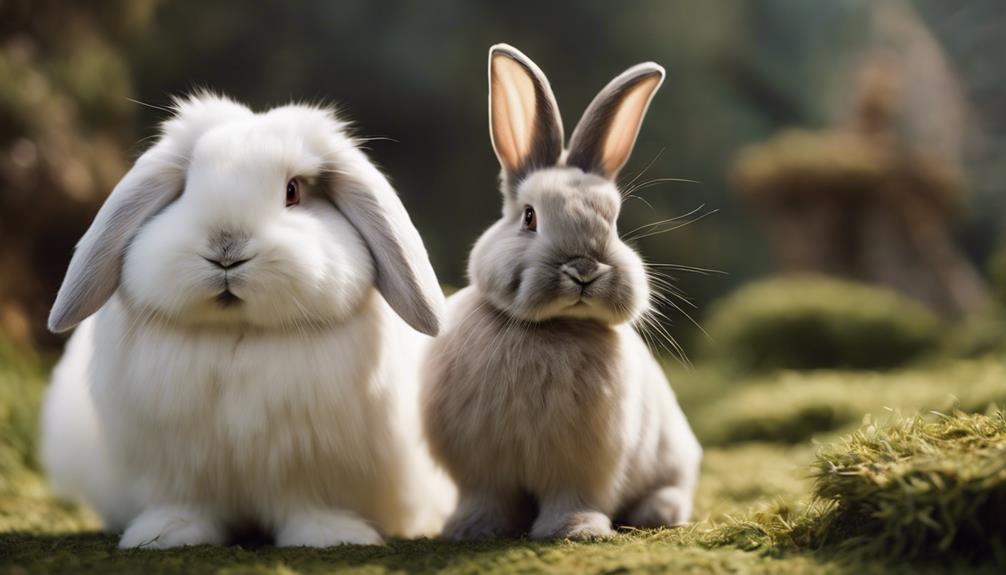
Originating from different breeding backgrounds, Himalayan and Californian rabbits showcase distinct physical characteristics and coat variations that set them apart in the realm of rabbit breeds. Himalayan rabbits typically weigh around 1-2 kg, while Californian rabbits can reach up to 10 pounds, making them significantly larger. The coat of Himalayan rabbits is predominantly white with colored ears, nose, and legs, with the color changing based on temperature fluctuations. On the other hand, Californian rabbits have a bulkier build and different coat characteristics. Himalayan rabbits are known for their oval nose marking and come in various colors such as black, blue, chocolate, and lilac, offering a wide range of choices. Below is a comparison table highlighting key differences in the physical characteristics and coat of Himalayan and Californian rabbits:
| Himalayan Rabbit | Californian Rabbit |
|---|---|
| Smaller size (1-2 kg) | Larger size (up to 10 lbs) |
| White coat with colored ears, nose, and legs | Different coat patterns and colors |
| Distinctive oval nose marking | Unique coat patterns and colors |
Temperament and Behavior
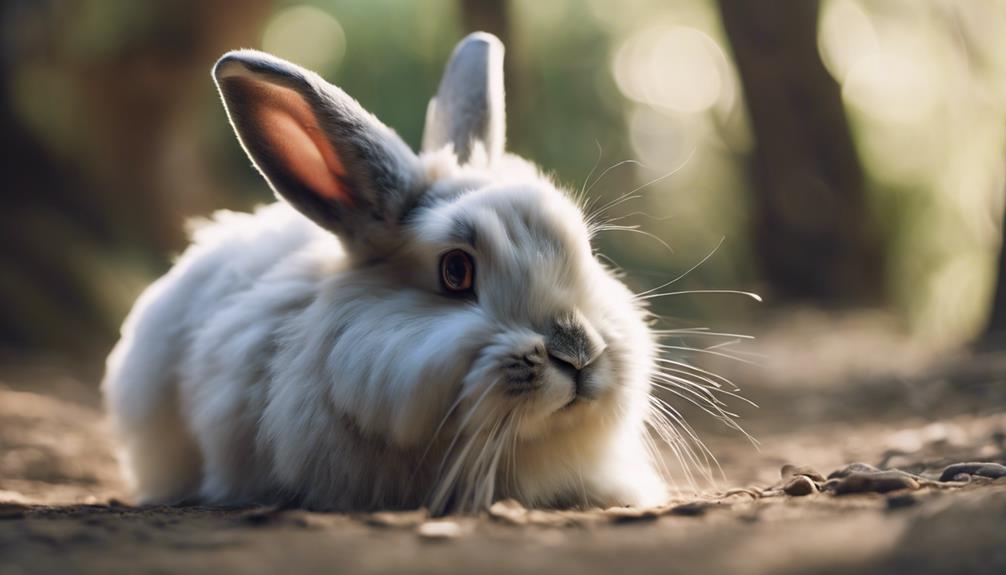
Coming from diverse breeding backgrounds, Himalayan rabbits exhibit distinct temperaments and behaviors that set them apart in the rabbit world. Here are some key points about the temperament and behavior of Himalayan rabbits:
- Friendly Nature: Himalayan rabbits are known for their calm and friendly demeanor. They're excellent companions, especially for households with children, as they tend to be gentle and sociable animals.
- Playful Behavior: These rabbits enjoy engaging in playful activities, particularly with noisy toys. Their interactive nature makes them fun pets to have around, as they love to play and explore their surroundings.
- Affectionate Companions: Himalayan rabbits can become quite affectionate if handled properly. They're described as easygoing and easily handled, making them great pets for those looking for a loving and low-maintenance companion.
Grooming and Care Needs
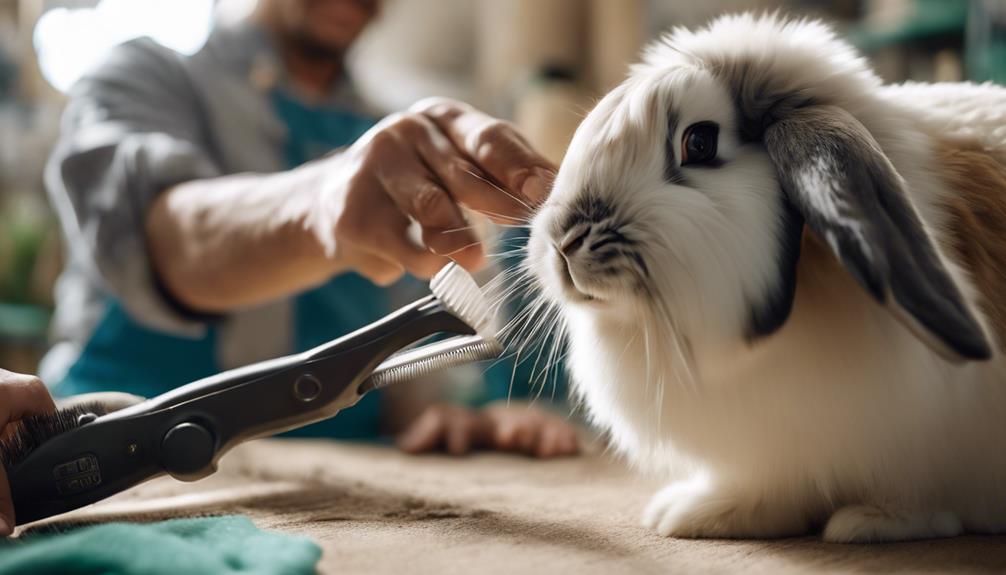
Regular grooming is essential for maintaining the health and appearance of Himalayan and Californian rabbits due to their specific coat needs. Himalayan rabbits have short, fine hair with distinctive coloration, such as the black Himalayan variety with white hairs on their body. Regular brushing is crucial for preventing matting in their fine fur and keeping their coat smooth and clean.
In contrast, Californian rabbits have denser fur that may require more frequent grooming sessions, especially during shedding seasons. Both breeds benefit from nail trims, although Himalayans tend to have lighter-colored nails compared to Californians.
Proper grooming practices not only help in preventing matting and maintaining a healthy coat but also contribute to the overall well-being of these rabbits. By dedicating time to regular grooming routines, owners can ensure that their Himalayan and Californian rabbits stay healthy, comfortable, and looking their best.
Health Considerations and Lifespan
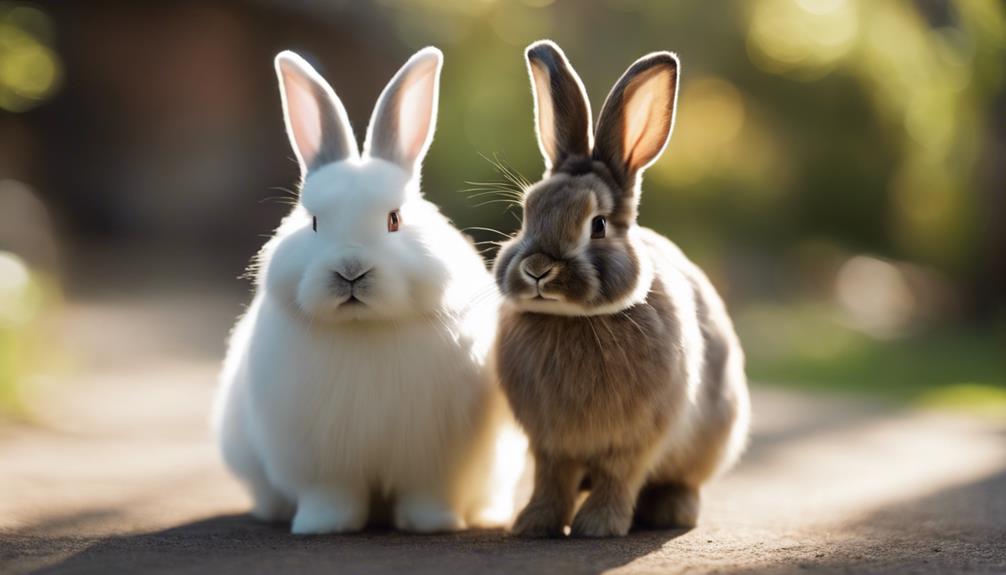
When considering the health and lifespan of Himalayan and Californian rabbits, it's crucial to prioritize proper diet, exercise, and regular veterinary care. Here are three key points to keep in mind:
- Lifespan: Himalayan rabbits typically live between 7-10 years when provided with adequate care, a lifespan that aligns with that of Californian rabbits. Ensuring they receive a balanced diet, sufficient exercise, and regular health check-ups can contribute to a longer and healthier life for both breeds.
- Health Considerations: Monitoring the rabbits' diet to prevent obesity, providing opportunities for exercise to maintain their physical health, and scheduling routine veterinary visits for preventive care are essential for addressing the health considerations of Himalayan and Californian rabbits. These practices play a significant role in mitigating common health issues and promoting overall well-being.
- Quality of Care: The quality of care, including proper handling, socialization, and environmental enrichment, significantly impacts the lifespan and health of both Himalayan and Californian rabbits. Understanding their specific health needs and potential risks associated with each breed is vital for ensuring they lead fulfilling lives.
Ideal Environments and Housing
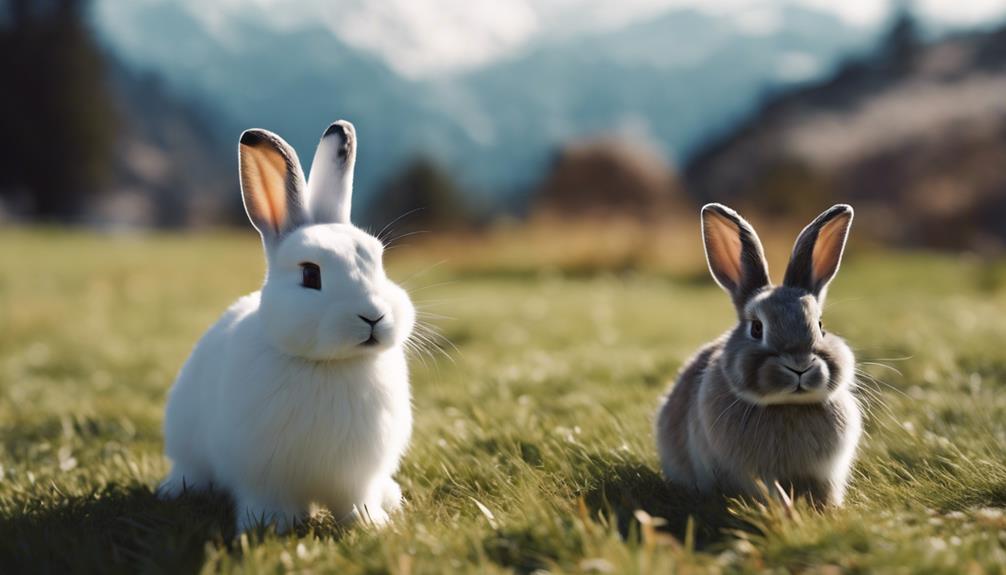
Himalayan rabbits thrive in indoor environments that maintain consistent temperatures to accommodate their color-changing tendencies. These rabbits, known for their striking white fur with colored points on their ears, feet, and nose, require spacious enclosures that allow for exercise and mental stimulation. Providing hiding spots and toys can help prevent boredom and promote their well-being. Proper ventilation and cleanliness are crucial for ensuring a healthy living space for these rabbits with their distinctive red eyes. Monitoring their behavior and adjusting the housing setup based on their preferences can further enhance their quality of life. Below is a table summarizing key points for creating an ideal environment for Himalayan rabbits:
| Ideal Environments for Himalayan Rabbits |
|---|
| Maintain consistent temperatures |
| Provide spacious enclosures |
| Offer opportunities for exercise |
| Include hiding spots and toys |
| Ensure proper ventilation and cleanliness |
Choosing Between the Two Breeds
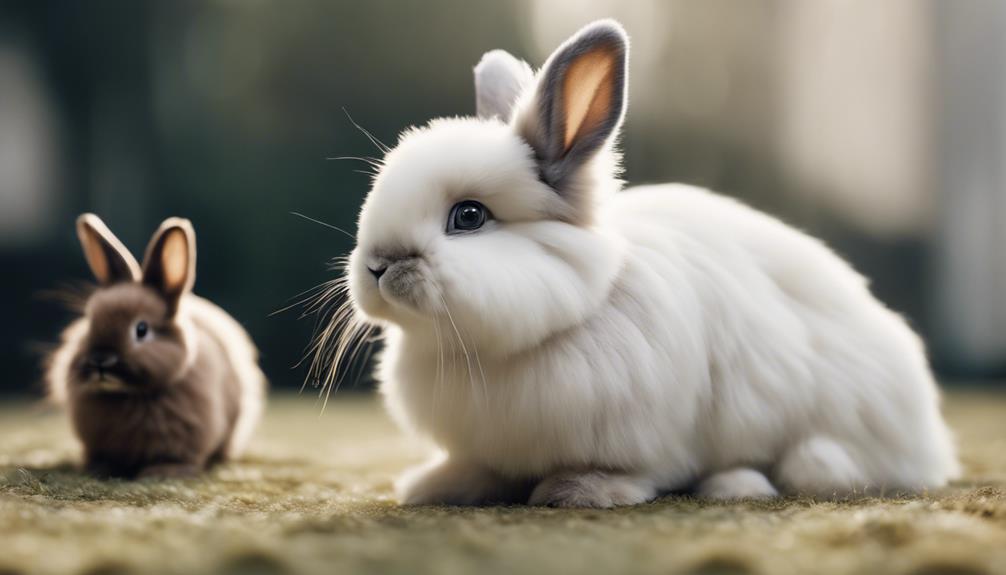
Considering the distinctive characteristics and intended purposes of Himalayan and Californian rabbits, prospective owners must carefully evaluate their size, body structure, coat type, and general requirements to make an informed decision when choosing between the two breeds.
- Size: Himalayan rabbits are smaller, weighing around 1-2 kg, while Californian rabbits can reach up to 10 pounds, making them significantly larger.
- Body Structure: Himalayan rabbits have a slender, long body with a slim head and upright ears, whereas Californian rabbits have a bulkier build.
- Coat Type: Himalayan rabbits have short, fine hair and a smooth coat, in contrast to the thicker coat of Californian rabbits.
When deciding between Himalayan and Californian rabbits, individuals should consider these factors to align with their preferences and needs. Himalayan rabbits are commonly chosen as pets or for showing due to their size and temperament, while Californian rabbits are often selected for commercial farming. By understanding these distinctions, owners can select the breed that best fits their lifestyle and purpose.
Frequently Asked Questions
What Is Unique About the Himalayan Rabbit?
When it comes to the Himalayan rabbit, one unique feature is their enchanting coat that changes color based on temperature. Their striking red eyes add to their mystique, making them a captivating breed with a rich history.
What Are the Characteristics of a Californian Rabbit?
Californian rabbits are known for their large size, distinct fur coloration with dark points, and docile temperament. They meet breeding standards, have a heavier build compared to Himalayan rabbits, and are suitable for handling.
Why Do Himalayan Rabbits Turn Black?
Himalayan rabbits turn black due to a genetic mutation called the Himalayan gene. This gene causes temperature-sensitive fur pigmentation, leading to melanin production in cooler body areas. Environmental factors influence this color-changing process, making it a unique trait.
What Is the Temperament of a Himalayan Rabbit?
Himalayan rabbits are renowned for their calm demeanor and playful nature, making them ideal companions. They easily bond with humans, displaying social behavior. Training tips can aid in handling aggression, while communication signals and behavioral cues enhance understanding.









